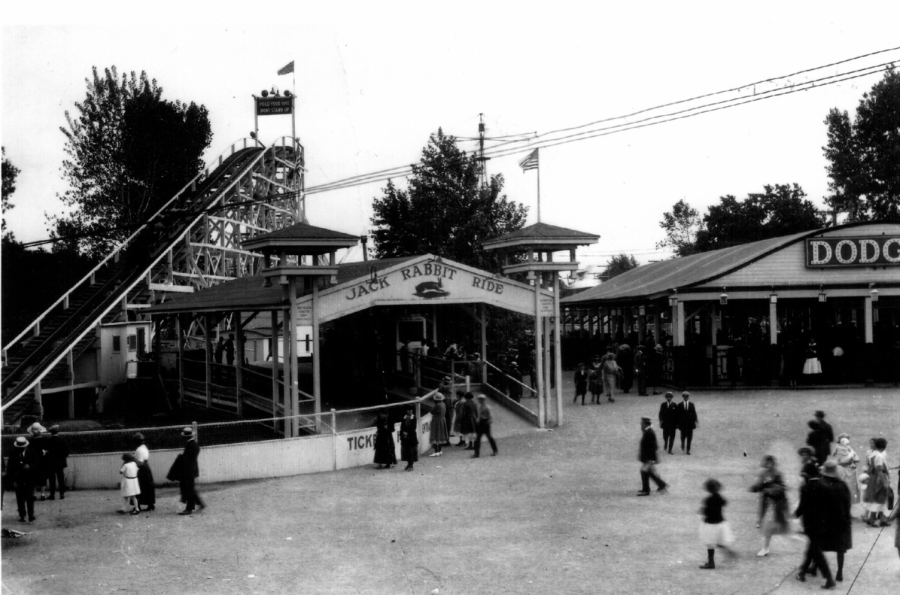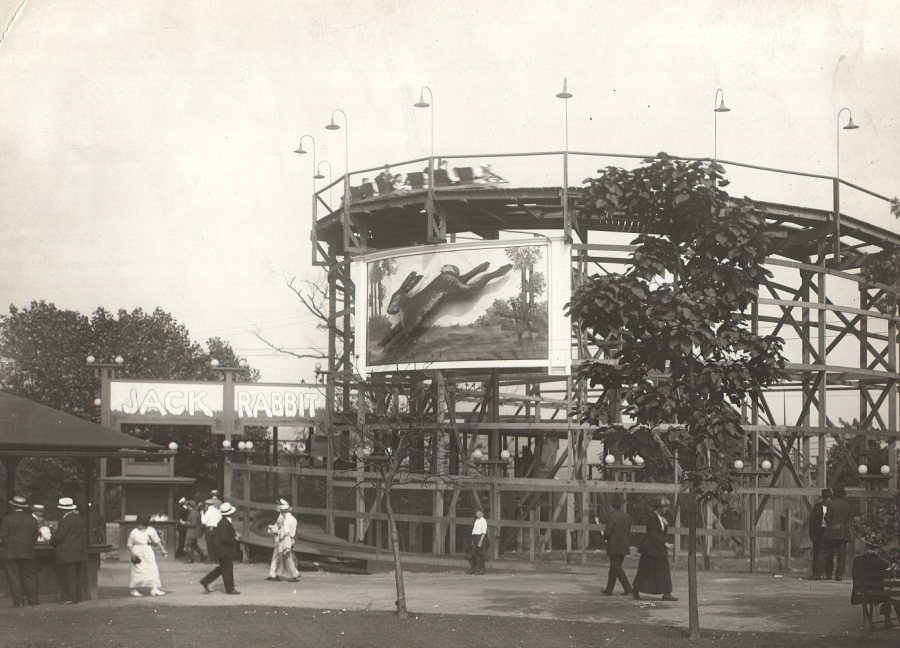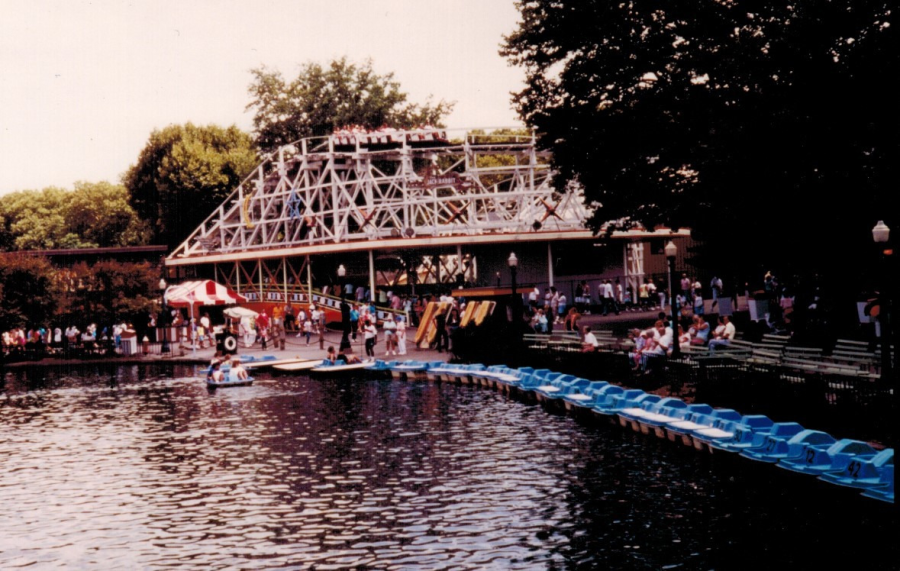The Coaster That Changed Them All Turns 100

The years surrounding World War I were among the most transformative in the history of the attractions industry. As ownership of amusement parks shifted from transportation companies—which started amusement parks as a way to generate ridership for their primary business—to entrepreneurs focusing on amusement parks as an industry, the facilities underwent a profound evolutionary change. The primary draw shifted from more passive attractions like theater, dancing, and picnicking to the thrill rides that define the industry to this day. It was a period of great innovation as rides like bumper cars, the Whip, and the Caterpillar first made their debut.
But arguably the most influential innovation was U.S. patent 1,319,888, which was filed by John A. Miller on July 24, 1919. The simple title of Pleasure Railway Structure provided no indication about the impact this innovation would have on the industry. Up to that time, roller coasters tended to be mild-mannered attractions, and innovation remained limited because of the challenge of keeping trains on the track.
Miller’s new patent developed the system of locking the train to the track through the use of a three-wheel system. With the advancement, roller coasters would never be the same and quickly evolved into the thrill rides we know today. And while roller coasters have evolved to incorporate high speeds, soaring heights, and multiple inversions, the same technology that Miller created a century ago is still utilized to keep the trains safely locked to the track.
“To me, it’s kind of crazy that record-breaking coasters are using derivatives of that technology,” says attractions industry expert Adam Sandy. “It amazes me that all this innovation is still going back to that basic thing,” Sandy adds, referring to Miller’s innovation.
By early 1920, Billboard magazine reported the firm Miller & Baker was “engaged in a score or more of cities constructing the new Miller 1920 Model Friction Coasters,” highlighting “a third set of friction wheels, which are located under the track and add not only an absolutely smooth, easy riding feature to the coaster, but also permits of greater speed, deeper dips, and more thrilling sensations than have ever before been experienced.” On May 8, 1920, the “Big Dipper” opened at Venice Pier in California. The coaster is thought to be the first of the approximately 15 underfriction roller coasters from Miller & Baker to open in the same season. With that, the global attractions industry would never be the same.
While the industry has changed immensely since that time and few remnants of that era still exist, two survivors of John Miller’s class of 1920 remain and continue to be as popular and beloved as they were a century ago.

A Pair of Rabbits
The older of the two survivors is the “Jack Rabbit,” which opened on May 31, 1920, at Seabreeze Amusement Park in Rochester, New York. The ride survived a 1923 fire that destroyed its lift hill, and ever since, the ride has treated its riders to a hilly, 2,130-foot-long layout that includes a 75-foot main drop, a helix, and a 265-foot tunnel.
Even a century after its opening, “Jack Rabbit” remains the most popular ride in the park. “The ‘Jack Rabbit’ has been the No. 1 attraction for as long as I have been here, more than 50 years,” says Seabreeze President Rob Norris. “It’s a very, very good design, a timeless design,” he says, citing the broad appeal of the ride to the park’s family-oriented customer base. “Some coasters are one and done. The ‘Jack Rabbit’ has great appeal; it’s a ride a variety of ages can ride.” Norris adds that in Rochester, a coming-of-age ritual is hitting 48 inches and riding the “Jack Rabbit” for the first time.
But Seabreeze’s “Jack Rabbit” is no museum piece. According to Norris, it is a ride that evolves with the times and over the years has seen most of its structure replaced by pressure-treated lumber, cement foundations installed, a modern lift motor added, and computer sensors installed to control station braking. It’s even on its third set of trains. “The most important thing is that it can be updated to today’s standards,” says Norris. “I think the brake handle is the only original part.”
Two and a half weeks after Seabreeze’s “Jack Rabbit” first opened, the “Jack Rabbit” at Kennywood gave its first rides. While the dimensions are similar to its New York cousin with a main drop of 70 feet and track length of 2,132 feet, the West Mifflin, Pennsylvania, park’s ride has a completely different personality being built around a large ravine to maximize the thrill of the ride’s four drops. But Kennywood’s “Jack Rabbit” is most known for its double dip, which even a century later provides one of the most thrilling moments of airtime on any roller coaster.
While Kennywood’s “Jack Rabbit” is no longer the largest of the park’s eight roller coasters, it has never ceased to rank among the most popular rides in the park. “It has one of the broadest audiences I can imagine,” says Nick Paradise, Kennywood’s director of public relations. “It’s very accessible for young children but appeals to thrillseekers. The double dip hill is such a unique thing; it draws a much wider audience,” he adds.

Ryan Quinn, Kennywood’s ride maintenance manager, credits the “Jack Rabbit’s” longevity to the park’s proactive maintenance program that involves extensive track and structural work annually, along with rebuilds of the ride’s one-of-a-kind 1950s vintage trains. “If you keep up on it, there is no reason to get rid of it,” says Quinn, a fifth-generation member of his family to be associated with Kennywood.
A Celebration Interrupted
This year’s COVID-19 pandemic thwarted both parks’ plans to fully incorporate the rides’ centennials in their 2020 promotional calendar, but both parks plan to hold celebrations in 2021.
Kennywood released a commemorative video on social media in 2020. The park also launched a “100 years, 100 memories” contest asking guests to submit stories and photos about their family’s experience with the “Jack Rabbit,” which generated 800 entries. The 100 winning stories will receive a season pass, and Kennywood plans to launch a webpage with the stories and images.
Yet, with a shortened 2020 season in Pennsylvania, Paradise says the team will go back to the drawing board with lessons learned in 2020 to develop a more robust celebration. “It will be our jumping-off point for 2021,” he says.
Meantime in New York, Seabreeze was not permitted to open to the public. However, the park did run the “Jack Rabbit” throughout the summer for employees in order to keep its title as the oldest continuously operating roller coaster in North America intact. “We’re still claiming it,” says Norris.
In 2021, Seabreeze will celebrate the “Jack Rabbit’s” 101st anniversary, holding a birthday party to celebrate its second century. The park will sell commemorative souvenirs and launch a 48-inch club to celebrate the ride’s newest riders and the beloved rite of passage in the community.

Timeless Appeal
In an industry that is always looking for new ways to thrill its guests, the enduring popularity of the “Jack Rabbits” as they begin their second centuries offers an enduring lesson. Attractions that provide an experience that generations can share again and again together will never go out of style.
“To me, it’s two things,” says Sandy. “The easy answer is that it’s fun, but it’s also a rite of passage. It has a multigenerational appeal and creates an indelible memory. And at our most basic, it’s what our industry is about.”
Jim Futrell has been researching the industry for 40 years. He has written extensively on the topic and oversees IAAPA’s Oral History Project.
